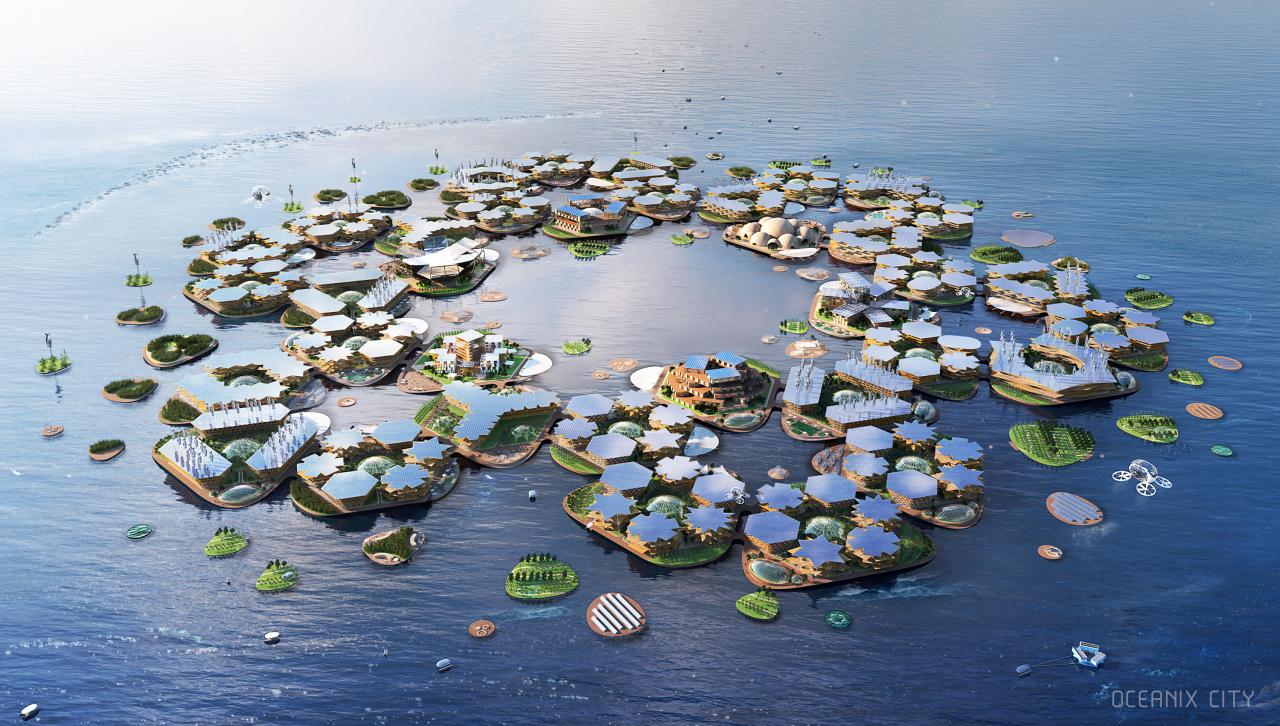The country of South Korea has ambitious plans for an amphibious floating city approved by the United Nations (UN) off the coast of Busan. To make what seems impossible into reality the Oceanix project will be a collaboration with engineers, designers, and architects to create a “flood-proof city” that can be a new home for 10,000 people.
The Oceanix project started in 2019 scouting locations to build prototypes that culminated in a realized project in 2021 when Oceanix, The Busan Metropolitan City of South Korea, and UN-Habitat signed an agreement to build the world’s first sustainable floating city prototype. This project is being presented as a solution to coastal cities threatened by sea-level rise as coastal cities are under threat by climate-related risks and sea-level rise.

Photo Credit: OCEANIX/BIG-Bjarke Ingels Group
The floating city named Oceanix City was designed to withstand natural disasters including Category 5 hurricanes, tsunamis, and floods. Oceanix City will also be self-sustainable utilizing solar panels on building rooftops along with the capability to produce its own fresh water and food through zero waste closed-loop systems.
The infrastructure platforms for the floating city will be prefabricated in factories and then towed into a place that has the capability to rise and fall with the sea. Each neighborhood is roughly five acres that are zoned to house 300 people in buildings up to seven stories high.

Photo Credit: OCEANIX/BIG-Bjarke Ingels Group
Oceanix City will consist of interconnected communities that are arranged into larger networks connected by walkways and bicycle paths. The Danish architecture firm, Bjarke Ingels Group (BIG), is creating neighborhoods clusters around the central harbor forming a village to home 1,650 people.
A proposal for the project claims the floating city will be self-sustaining with “zero waste closed-loop systems” as residents will have the capabilities to produce their own energy and food. Oceanix City will be self-sustaining growing its own food on urban communal farms with aquaponic food-growing facilities, compost gardens, and seafood farms in surrounding waters.

Photo Credit: OCEANIX/BIG-Bjarke Ingels Group
Oceanix City can produce its own energy with solar panels and floating wind turbines on uninhabited platforms. Some platforms can also be used to grow bamboo to be used for the construction of new buildings.
Urban plans for the floating city also account for facilities for the production of freshwater utilizing on-site treatment plants as well as systems for collecting and storing a natural source of rainwater. The villages combined can form to join the 10,000-person metropolis that also features leisure facilities, restaurants, co-working spaces, centers for spirituality, a town square, a marketplace, and more.

Photo Credit: OCEANIX/BIG-Bjarke Ingels Group
The co-founder of Oceanix, Itai Madamombe, explained the first prototype neighborhood near Busan will be complete with residents living in Oceanix City by 2025. Oceanix will also develop more floating cities worldwide and is currently working with 10 other governments for more floating city locations. The construction for the floating city is estimated at $200 million and has yet to disclose whether they will charge residents to live there.
This would be one project of a collection of climate adaptation strategies addressing climate problems providing housing to withstand natural disasters. Oceanix City will also be an alternative sustainable solution for housing that can be implemented worldwide.

